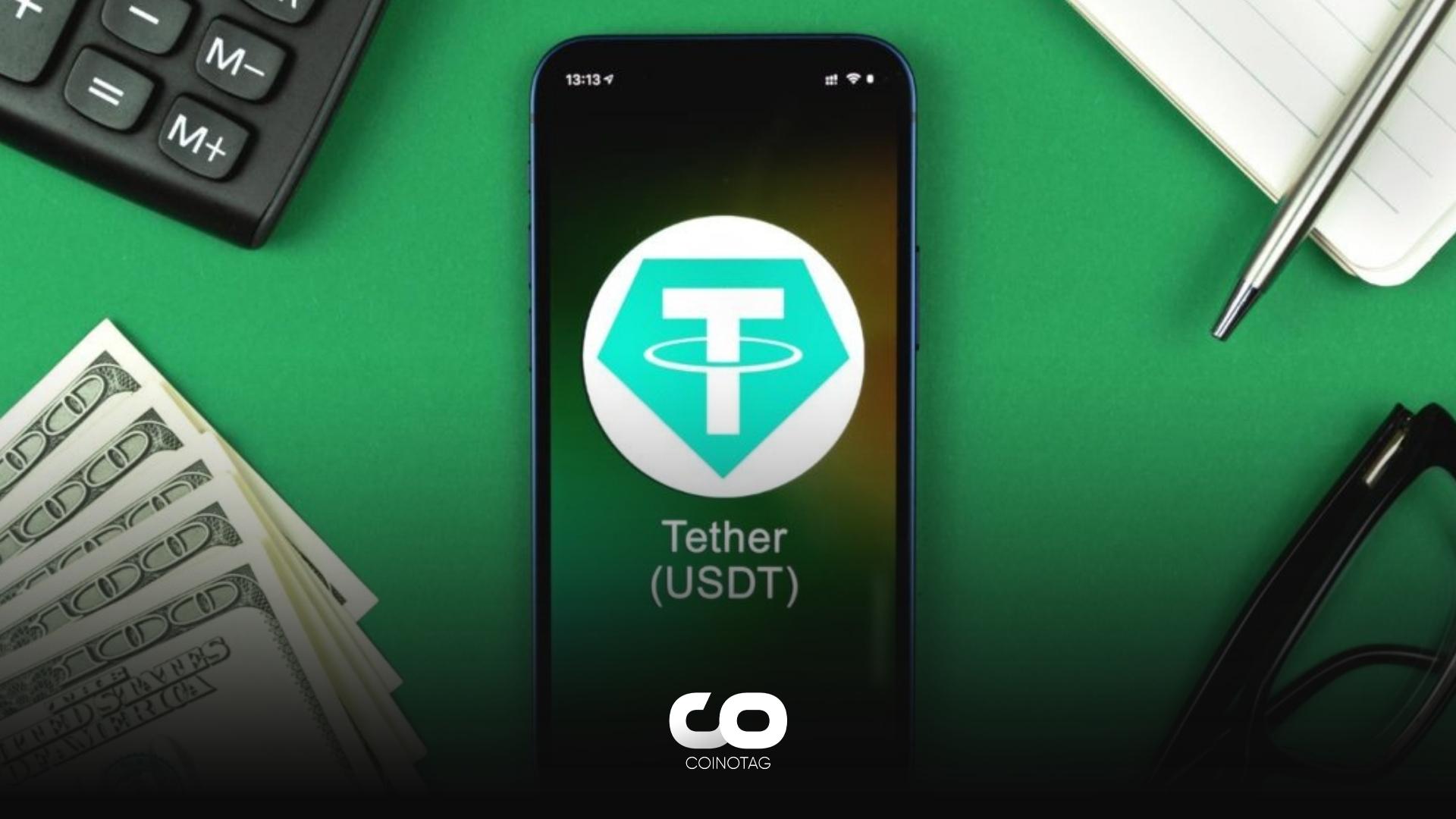- Tether aims to provide stability by pegging its value to the US dollar, with the typical goal of avoiding the volatility seen in crypto markets.
- Due to Tether’s centralized and opaque structure, some argue that it operates more like a fractional reserve bank rather than a true stablecoin.
- Given the concerns surrounding Tether, one of the most significant questions is whether Tether issuance is responsible for manipulating or supporting Bitcoin prices at specific times.
Tether (USDT) has always been a controversial stablecoin in the cryptocurrency market; thoughts on Tether’s impact on the market.
An Overview of Tether (USDT) Stablecoin

The rise of stablecoins like Tether (USDT) has been one of the most significant developments in the cryptocurrency market in recent years. Tether typically aims to provide stability by pegging its value to the US dollar and avoiding the volatility often seen in crypto markets. However, Tether has also faced controversy, with claims that its issuance and circulation could manipulate crypto prices. Understanding the potential impact of Tether is important for anyone interested in the crypto space.
Tether, as a centralized stablecoin, relies on reserves held by the issuing company, Tether Limited. Unlike decentralized algorithmic stablecoins, Tether relies on the supervision of Tether Limited to maintain its dollar peg.
Tether accomplishes this by aiming to ensure that there is always 1 USDT token in circulation for every 1 US dollar held in reserves. New USDT is minted when buyers deposit US dollars with Tether Limited, and holders can redeem their USDT for US dollars. This allows traders to stay in stablecoins during transactions, avoiding delays and fees associated with fiat transfers between exchanges while protecting against price fluctuations.
Criticism and Controversy Surrounding Tether
Despite its rapid growth and importance, Tether has long faced criticism regarding its reserves and issuance practices. Due to Tether’s centralized and opaque structure, some argue that it operates more like a fractional reserve bank rather than a true stablecoin.
Key points of contention include:
- Transparency of reserves: Concerns exist about Tether’s reserves due to the lack of details, leading to doubts about whether it is consistently 100% backed.
- Regulatory issues: Tether has faced regulatory challenges, including a 2021 settlement with the New York Attorney General’s Office over allegations of misrepresenting its reserves.
- Timing of issuance: New USDT has often entered circulation shortly after BTC prices dropped, leading to allegations of market manipulation.
These debates have prompted ongoing speculation and research into the broader impact of Tether activity on crypto prices.
Is Tether Manipulating Crypto Prices?
Given the concerns surrounding Tether, one of the most significant questions is whether Tether issuance is responsible for manipulating or supporting Bitcoin prices at specific times. Analyzing this complex issue requires considering both sides:
Arguments for Tether manipulation:
- During market downturns, new Tether entering circulation shortly after can boost BTC prices and stabilize them.
- There is evidence of crypto prices and Tether issuance following similar patterns, rising and falling simultaneously.
- Statistical analysis shows a relationship between Tether issuance and increased crypto prices.
- If Tether lacks full reserves, it could essentially “print money” to support BTC valuations during liquidity crises.
Arguments against Tether manipulation:
- Correlation does not always imply causation – rising crypto prices can also trigger increased Tether demand and issuance.
- Other macro factors, such as increased adoption and institutional investment, likely support cryptocurrency values.
- As a small percentage of the total crypto market capitalization, new Tether alone may not have enough influence to move crypto prices significantly.
- Tether issuance and circulation appear to follow demand in Asian markets like China rather than directly manipulating the market.
Taken as a whole, the balance of evidence suggests that Tether activity likely has an impact on crypto markets, but the scale of that impact remains a subject of debate. More transparency and reporting on reserves could help quantify this relationship. However, manipulation does not fully explain the broader trends driving crypto prices in recent years. The real picture is complex.
Unanswered Questions about Tether’s Market Impact
To what extent does Tether issuance drive crypto prices, and how does it respond to organic demand? The ranking and direction of the effects between Tether circulation and market prices remain uncertain. Does new Tether support Bitcoin, or does Bitcoin’s price affect Tether issuance? More data can help quantify the scale of these impacts.
To what extent does Tether activity exacerbate speculative frenzies? Tether issuance can facilitate rapid, liquid entry and exit of crypto assets, potentially enabling more leveraged speculation. This could exacerbate rallies and crashes.
Could a Tether crisis trigger contagion in crypto markets? Loss of confidence in Tether’s 1:1 dollar peg and reserves could destabilize cryptocurrency trading and liquidity. Understanding these systemic risks is important.
Lessons from the Tether Controversy
The discussions surrounding Tether highlight the growing pains of cryptocurrency stability and transparency. As an early mover, Tether created a use case but also set early warning signs.
However, these challenges present opportunities for improvement in the future. The growth of fully decentralized stablecoins and a move toward proving reserves among centralized issuers are potential solutions. Additionally, increased regulatory clarity and oversight will strengthen trust in stablecoins.
Beyond stablecoins, the Tether controversy is a reflection of the need for legitimacy and maturity for the cryptocurrency ecosystem to reach its full potential. Upholding ethical practices, financial stability, and transparency will help cryptocurrencies provide not only speculative value but also societal benefits. By learning from concerns like those surrounding Tether, creators and users can steer the industry in a more sustainable direction.






